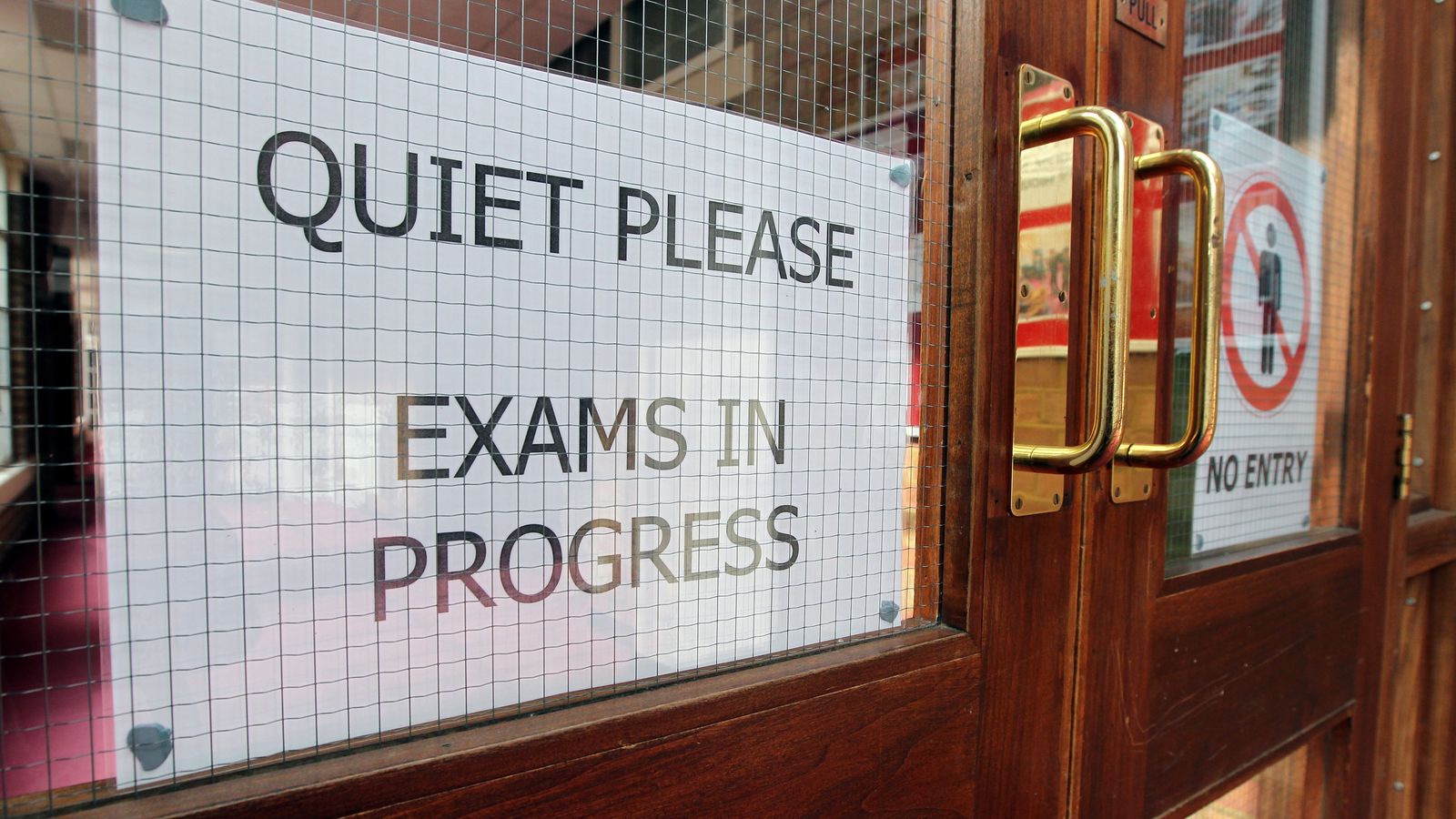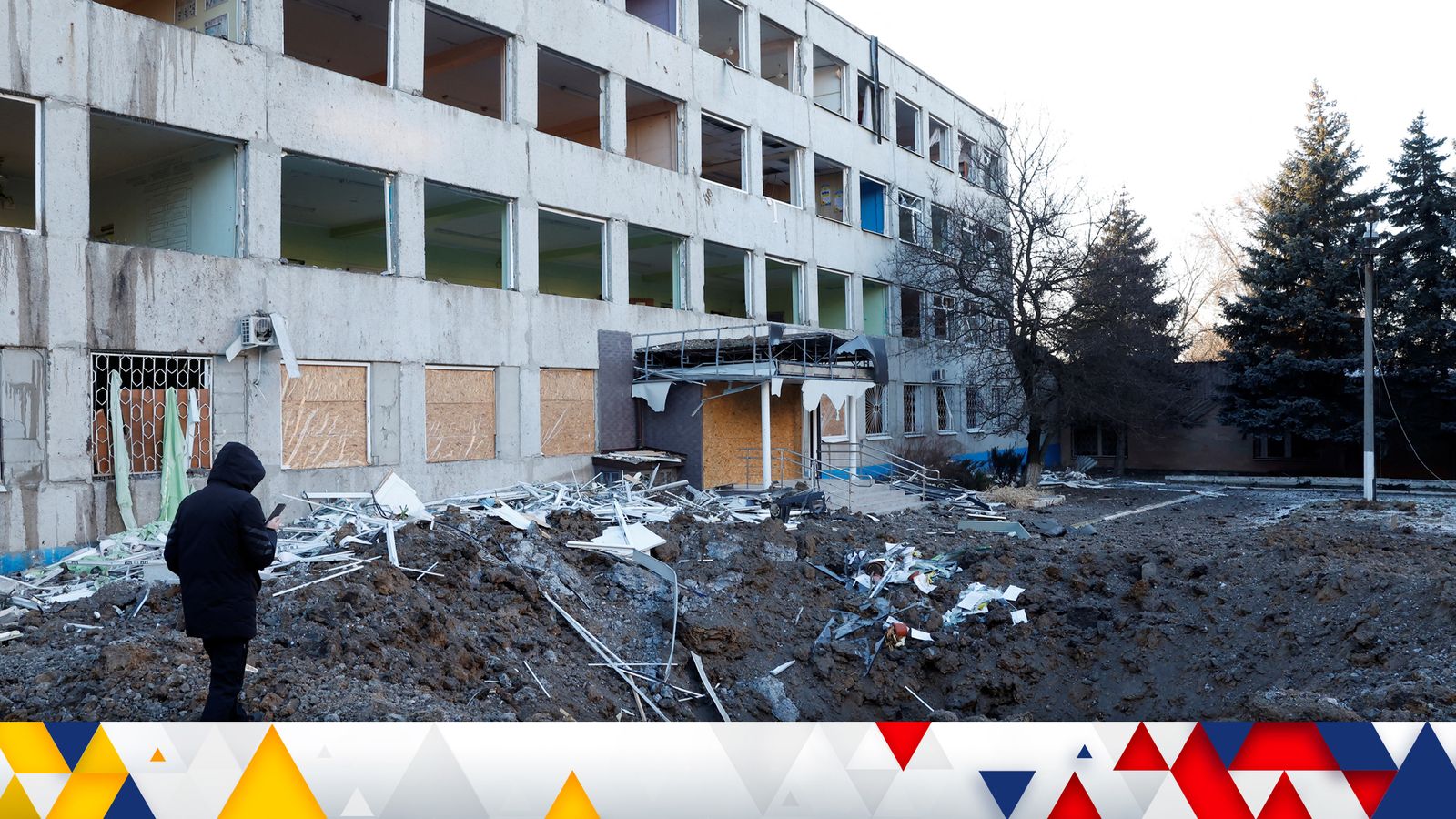The proportion of GCSE students awarded top grades has almost returned to pre-pandemic levels as the number of pupils studying Chinese has doubled.
Hundreds of thousands of students are receiving their GCSE results this morning in a year when efforts have been made in England to reduce the grade inflation from the pandemic.
It comes as data from this year’s cohort shows significant changes in subjects taken at GCSE level.
The number of students taking Chinese has doubled since 2019 while those studying Russian as a GSCE subject has increased by almost 53%.
Students getting their results – follow latest
Meanwhile, pupils appear to be choosing to study more STEM subjects (science, technology, engineering and mathematics) – the number of students taking statistics has increased by 20.4%, computing by 11.6%, business studies by 14.8% and engineering by 8.1%.
Irish, performing arts and music all saw significant drops in students taking the GCSE exam by 18.2%, 16.6% and 12.5% respectively.
GCSE results day live updates: Students getting their results – as minister admits they’ve ‘undoubtedly suffered disruption’
Bills will be more expensive for one in three households with poorest most affected, Resolution Foundation says
Death of bus driver Gordon Stirling in East Ayrshire van crash now being investigated as murder
Boys have narrowed the gender attainment gap slightly, with 19.1% achieving top grades compared to 24.9% for girls. That is a gap of 5.8 percentage points, compared to 7.4% last year and 6.5% in 2019.
It is the narrowest lead since 2009.
England has brought GCSE grades down almost to 2019 levels, with the share receiving 7 or above now at 22% (compared to 21% in 2019).
It was the only nation in which exam boards were instructed to aim for a full reduction in pandemic grade inflation, with Wales and Northern Ireland instead opting to give exam boards until next year to bring grades down to pre-2020 levels.
In Wales, the share receiving top grades (A* and A) is still three percentage points above 2019 levels, while in Northern Ireland it is four percentage points above.
More than a fifth (22%) of GCSE entries were awarded the top grades – at least a 7 – this year, down by 4.3 percentage points on last year when 26.3% of entries achieved the top grades.
The figures, published by the Joint Council for Qualifications (JCQ), cover GCSE entries from students in England, Wales and Northern Ireland.
Overall, there were around 203,000 fewer top grades compared with last year, but there were 142,000 more top grades awarded this year than in 2019.
The proportion of entries getting at least a 4 – equivalent to a C grade and considered a “standard pass” – has fallen from 73.2% in 2022 to 68.2% this year, a drop of five percentage points but higher than 67.3% in 2019.
It comes after COVID-19 led to an increase in top grades in 2020 and 2021, with results based on teacher assessments instead of exams.
Geoff Barton, general secretary of the Association of School and College Leaders (ASCL), said: “An enormous amount of hard work has gone into these qualifications in often difficult circumstances and the young people receiving their results today deserve great credit for what they have achieved.”
He added: “We would caution against direct comparisons between this year’s grades and those in 2019 because of the disproportionate impact of the pandemic and subsequent cost-of-living crisis on young people from disadvantaged backgrounds.
“It is likely that the outcomes for many of these young people will be affected by these factors and this may also impact on the results of schools which serve disadvantaged communities.
“The government has failed to grasp the gravity of this issue. It did not invest sufficiently in education recovery from the pandemic – causing its own recovery commissioner to resign in protest – and it has failed to address the high level of child poverty in the UK. We are concerned that this will lead to a widening of the attainment gap between rich and poor.”








